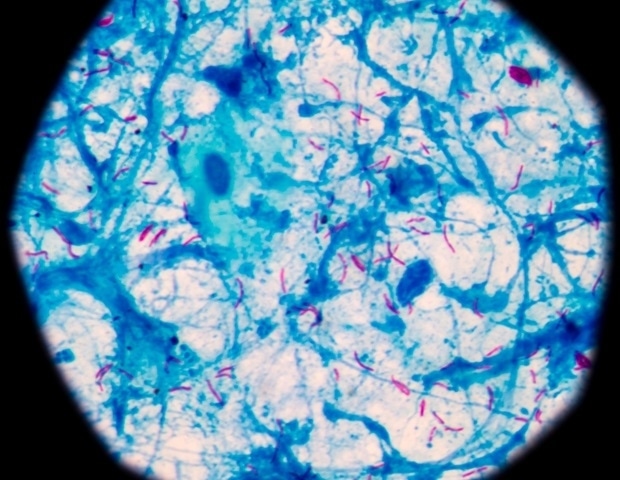
[ad_1]

Current analysis means that the emergence of tuberculosis an infection in human populations dates again tens of hundreds of years sooner than beforehand recognized circumstances within the Center East. In collaboration with a world analysis crew, Hungarian researchers have edited and printed a particular challenge of the journal Tuberculosis.
In July 2022, the Division of Anthropology of the College of Szeged organised a convention on the paleopathology and evolution of tuberculosis. The ICEPT3 convention was intently linked to the NRDI-best funded analysis mission of György Pálfi (Division of Anthropology, Szeged College), and the displays of researchers from everywhere in the world offered a complete overview of the historical past of the pathogen, going past the earlier data.
Within the final a long time, the historic Carpathian Basin has change into the best-researched area on the planet when it comes to TB an infection, primarily because of the work of researchers from the Division of Organic Anthropology on the College of Science and Informatics at College of Szeged the Division of Organic Anthropology on the College of Science at Eötvös Loránd College and the Division of Anthropology on the Hungarian Pure Historical past Museum. Current analyses by György Pálfi, Ildikó Pap, and their colleagues counsel Neanderthal specimens from Subalyuk cave (Hungary), who lived greater than 32,000 years in the past, might have additionally suffered from TB an infection. These new scientific discoveries place the looks of tuberculosis in human populations tens of hundreds of years sooner than the earliest recognized circumstances.
The primary part of this Tuberculosis Complement challenge is devoted to the reminiscence of Professor David Ernest Minnikin, an excellent scholar of TB evolution and a well known pioneer within the discipline of mycobacterial analysis, who died in 2021. Within the first articles, the authors commemorate his excellent work and the exceptional findings which have enriched each the trendy and historic mycobacterial analysis group. The next papers are about important historic TB analysis outcomes with energetic contributions by Professor Minnikin and collaborators: the above-mentioned discovery and evaluation of paleopathological and paleomicrobiological traces of TB an infection within the Subalyuk Neanderthal stays (Hungary). These outcomes are of nice significance for our data of the evolution of tuberculosis, and these research are intently associated to the themes of the articles that comply with.
Two research led by doctoral college students from the Division of Organic Anthropology at ELTE have contributed considerably to the detailed exploration of the evolution of tuberculosis, reviewing beforehand recognized and publishing newly recognized circumstances from contained in the borders of in the present day’s Hungary.
Anett Gémes and colleagues introduced an in depth evaluate of 18 circumstances alongside the introduction of seven new circumstances. Three of the seven circumstances are from the Bronze Age (2600/2500-800 BC) when circumstances of skeletal tuberculosis from the Carpathian Basin had not been reported.
Krisztián Kiss and colleagues have reviewed 114 beforehand printed circumstances of TB with the publication of the detailed description of a further 39 new circumstances.
Thus, a complete database representing the Carpathian Base of 2nd-Sixteenth centuries was established. Major knowledge (intercourse and age) and detailed description of pathological alterations can be found for the affected people, illustrated by photo- and radiographs. It could not have been potential to gather this huge variety of circumstances with out shut cooperation between the Departments of Organic Anthropology of ELTE and SZTE, and between a number of different establishments, anthropologists, and archaeologists.
All articles within the quantity will likely be out there freed from cost till 14 January 2024 on the following hyperlink (5 research are Open Entry and can stay out there for obtain): https://www.sciencedirect.com/journal/tuberculosis/vol/143/suppl/S
Because the database consists of detailed paleopathological descriptions moreover photo- and radiographic documentations for skeletal tuberculosis, a deeper understanding of the pure course, macromorphological and radiological manifestation of the illness will be achieved. Thus, in addition to revealing temporal and spatial traits based mostly on the outcomes, the examine will be additionally thought of vital contribution to the paleopathological and medical disciplines.
The convention and the accompanying particular challenge of Tuberculosis Journal spotlight how a broad nationwide collaboration in a given discipline, supported by a world community of researchers, can obtain super and internationally excellent outcomes.
The variety of circumstances representing this comparatively small geographical area is exclusive across the globe, which is the results of the arduous work of Hungarian anthropologists within the final a long time. The various recognized TB circumstances with the detailed descriptions present an excellent foundation for designing future molecular research and take a look at a number of hypotheses higher to know the evolutionary historical past of tuberculosis pathogen strains.
Your entire proceedings of the convention had been printed in December 2023 within the prestigious journal Tuberculosis. An excellent Hungarian-French-Italian collaboration among the many College of Szeged, the Ecole Pratique des Hautes Etudes, the Eötvös Loránd College, the Université Paris-Saclay, and the Eurac Analysis has resulted within the publication of the most recent worldwide TB evolution analysis outcomes.
The amount was edited in a world collaboration, due to the visitor editorship of György Pálfi from Szeged College (Szeged, Hungary), Olivier Dutour from Ecole Pratique des Hautes Etudes – PSL College Paris and CNRS, Université Bordeaux Montaigne (France), Tamás Hajdu from ELTE (Budapest, Hungary), Christophe Sola from Université Paris-Saclay, Université Paris-Cité (France) and Albert Zink from Institute for Mummy Research, EURAC Analysis (Bolzano, Italy). Of the 22 research included, 10 are partly or fully the work of Hungarian researchers.
Supply:
Journal reference:
Gémes, A., et al. (2023). Tuberculosis in prehistory in Jap Central Europe (Hungary) – Chronological and geographical distribution. Tuberculosis. doi.org/10.1016/j.tube.2023.102396.
[ad_2]